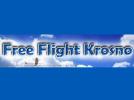Air France A320 at Tel Aviv on Apr 3rd 2012, approach to stall on turning final results in Alpha Floor and flaps overspeed
An Air France Airbus A320-200, registration F-HEPE performing flight AF-1620 from Paris Charles de Gaulle (France) to Tel Aviv (Israel) with 149 passengers and 6 crew, was on a RNAV Visual approach to Tel Aviv Ben Gurion Airport's runway 26. According to the standard instrument arrival procedure via waypoints DOVER and KEREN the crew had been instructed about 10nm prior to DOVER to reduce to minimum clean speed, shortly before overflying DOVER the crew was cleared to descend to 3000 feet and reduce to 180 knots, which the crew complied with utilizing automation in LNAV and open descent. The aircraft overflew KEREN at 3280 feet and 180 KIAS, the pilot flying however felt they were high on the approach but did not share his concern with the pilot monitoring. While on downwind the crew changed to managed speed, selected 1000 feet into the altitude window and activated open descent, the engines reduced to idle thrust. Full configuration is being selected, the Vapp of 138 KIAS is selected into the speed window. Still in the decent through about 1540 feet the autopilot gets disconnected, flight director and autothrust remain engaged. The aircraft turned final and was about to align with the extended runway centerline, still at 20 degrees of bank, the pilot flying applies nose up inputs for about 10 seconds while the flight director commands nose down inputs to maintain the target speed, the airspeed reduces from 135 KIAS to 122 KIAS with the pitch increasing from 0.7 to 10 degrees nose up, the pilot monitoring later provided testimony that he was monitoring the alignment with the runway. An automatic "Speed, Speed, Speed" call activated at Vapp-16 knots. The pilot flying decided to go around but did not call out the go-around. The pilot flying moved the throttle levers into the TOGA detent and applied nose up inputs, the pilot monitoring applied nose down inputs for about 2 seconds (dual input). At that point Alpha Floor protection activated applying TOGA thrust and TOGA Lock, 3000 feet is being selected into the altitude window, open climb mode is being engaged, the speed returns into normal range, the pilots do not detect the "TOGA LOCK" status however. The aircraft climbs through 2000 feet, the crew recognizes difficulties in reducing the thrust. The flaps are selected to 1, the speed increases to 208 KIAS and still continues to increase, the gear is being extended in order to counter the speed increase, 2000 feet and 188 KIAS are being selected into the MCP, the aircraft climbs to 2500 feet before starting to descend again, the speed increased to 223 KIAS (flaps limit 215 KIAS), an overspeed alarm activated. In response to the overspeed alarm the pilot flying reduced the thrust levers to idle, which removed the "TOGA LOCK" mode and disengaged autothrottle, the engines spooled down. The pilot flying stabilized the aircraft, positioned for a second approach and landed safely.
The French BEA released their final report in French concluding the probable cause of the serious incident was:
The RNAV Visual Approach to runway 26 was proposed to all arriving aircraft indiscriminately. The lack of RNAV Visual Approach training at Air France at the time of the occurrence caused the captain fail to anticipate possible problems during the approach briefing, that the first officer might encounter during the unusual approach. In addition, the lack of understanding of how open descent, open climb and autothrottle work with the crew believing the autoflight systems would still ensure maintaining correct airspeed led to lack of monitoring of airspeed. The lack of identification of such risk factors led to the aircraft entering the turn to final in low energy state, given its configuration and the nose up inputs the speed warning and Alpha Floor activated.
The BEA reported the captain (58, ATPL, 20,000+ hours total, 9,800+ hours on type) was pilot monitoring and the first officer (27, 500 hours total, 200 hours on type) was pilot flying.
The BEA analysed that following the feeling that they were too high and too fast very early into the approach the first officer applied full configuration very early into the approach, while the manuals recommend to apply full configuration only once established on final approach.
The investigation could not determine why the first officer applied nose up inputs during the turn to final opposed to the flight director indications. These inputs triggered the speed warning and activation of Alpha Floor, neither pilot detected the resulting TOGA Lock and situational awareness degraded.
The BEA analysed that the aircraft subsequently went into overspeed. In a reflex to the overspeed warning the first officer retarded the thrust levers to idle, which disengaged the autothrottle and thus removed the TOGA Lock and permitted the engines to spool down, neither pilot had still detected the TOGA Lock condition.
The investigation determined that there was lack of understanding of the automation modes and their consequences and recommended to provide training with focus on understanding open descent in the approach. A second safety recommendation was issued to the Civil Aviation Authority of Israel to only apply RNAV visual approaches to approved operators.
RNAV Visual Approach Runway 26 (Graphics: BEA/AIP Israel):
http://avherald.com/h?article=46d16a49














Komentarze